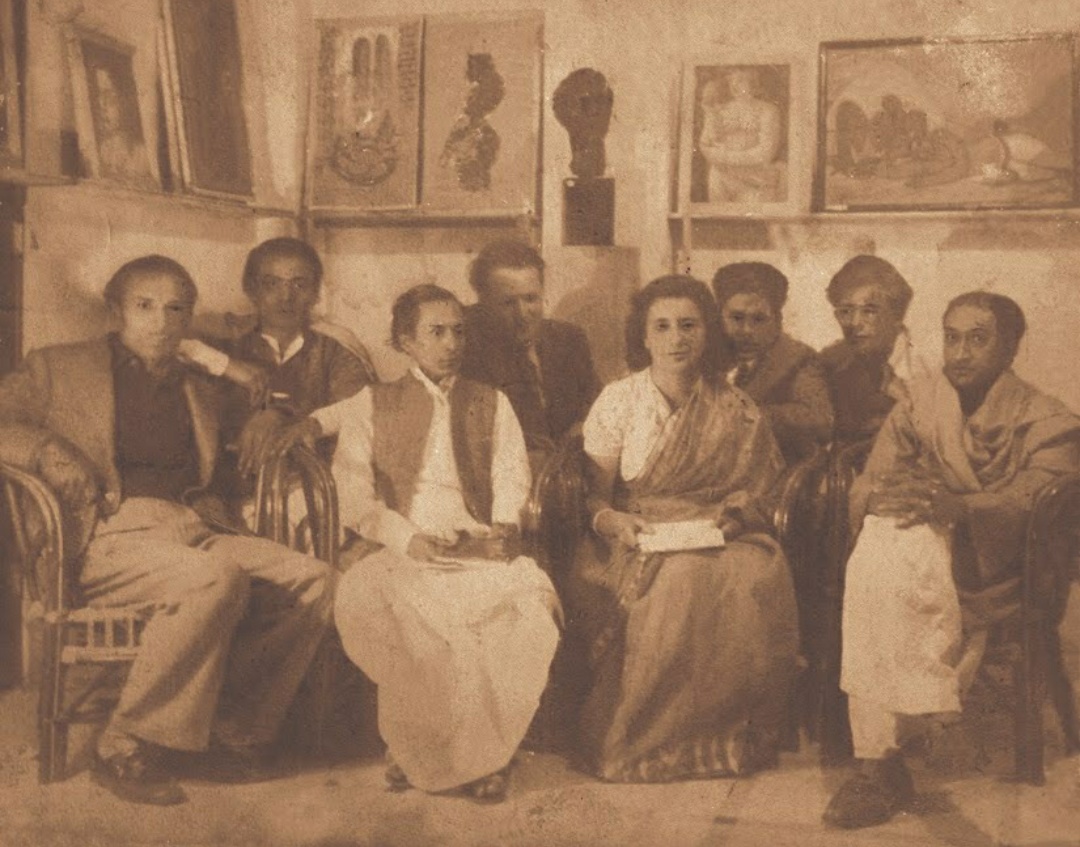Calcutta Group on:
[Wikipedia]
[Google]
[Amazon]
The Calcutta Group was a group of modern artists in

Article on Calcutta Group by Saffronart
''Hilarious treatment of protagonists'' (exhibition by Paritosh Sen), The Telegraph, 5 May 2006
{{Modernism Indian artist groups and collectives 20th century in Kolkata 1940s in India
India
India, officially the Republic of India (Hindi: ), is a country in South Asia. It is the seventh-largest country by area, the second-most populous country, and the most populous democracy in the world. Bounded by the Indian Ocean on the so ...
, formed in 1943 in Kolkata
Kolkata (, or , ; also known as Calcutta , the official name until 2001) is the capital of the Indian state of West Bengal, on the eastern bank of the Hooghly River west of the border with Bangladesh. It is the primary business, comme ...
. It has the distinction of being the first artistic movement of its kind in both Bengal and all of India. Though short-lived – the group disbanded in 1953 – the Calcutta Group was instrumental in the transformation of contemporary Indian art and brought this genre onto the world stage.
Members

Core Members (1943)
* Subho Tagore * Nirode Mazumdar * Rathin Moitra * Prankrishna Pal *Gopal Ghosh
Gopal may refer to:
* Gopal (caste), a social community of Odisha in India
* Gopal (Krishna), the infant/child form of Lord Krishna
* Gopal Bansa, ancient Kingdom in Nepal
* The Gopalas, an early Gaudiya Vaishnava institution
* Gandhian Organisatio ...
* Paritosh Sen
Paritosh Sen ( bn, পরিতোষ সেন) (26 September 1918 – 22 October 2008) was a leading Indian artist. He was born in Dhaka (then known as Dacca), the present-day capital of Bangladesh. He was a founder member of the Calcutta ...
* Pradosh Das Gupta
* Kamala Das Gupta
Additional Members
* Abani Sen (1947) * Gobardhan Ash (1950) * Sunil Madhav Sen (1952) * Hemant Misra (1950)Formation
Subho Tagore, nephew ofAbanindranath Tagore
Abanindranath Tagore ( Bengali: অবনীন্দ্রনাথ ঠাকুর; 7 August 1871 – 5 December 1951) was the principal artist and creator of the "Indian Society of Oriental Art". He was also the first major exponent of Sw ...
and Grand-nephew of Rabindranath Tagore
Rabindranath Tagore (; bn, রবীন্দ্রনাথ ঠাকুর; 7 May 1861 – 7 August 1941) was a Bengali polymath who worked as a poet, writer, playwright, composer, philosopher, social reformer and painter. He resh ...
, was a budding artist who studied art at the Government College of Art & Craft. After traveling to London for a few years in order to hone his artistic skills, he moved back to India with the idea of creating a group for plastic artists. Along with fellow painters Nirode Mazumdar, Rathin Maitra, Prankrishna Pal and Gopal Ghosh, he formally created the Calcutta Group in 1943. Later that year, another painter, Paritosh Sen, along with sculptors Pradosh Das Gupta, Kamala Das Gupta joined the society. These eight members were known as the organization's core, as well as the driving force behind it. Over the years, other artists joined the group as well including Abani Sen in 1947, Gobardhan Ash in 1950, Sunil Madhav Sen in 1952, and Hemanta Mistra in 1953.
Philosophy
During this period of time, Bengal - a state in India, home to many of the group's members - had been facing many tragedies including wars, famines, massacres, and even the partition of the country. Stemming from these events, the members of the Calcutta Group focused not on aesthetic, but on the social and political realities of the state and nation at the time. Many of the group's members were actually sympathetic towards the Communist Party that was making its way through India and some were even militants themselves. The group's manifesto was a synthesis of all of these ideas that stressed two main points: renouncement of religion in art and creation of opportunities for Indian art to modernize. The first idea was meant to remove the evils of demagoguery and elitism and produce works that focused on the population as a whole. However, the dismissal of works based n Hindu mythology came across as anti-religious and even atheist and therefore shocked many, leading to the moniker "Artistic Scandal".Sources
* Partha Mitter, ''Indian Art (Oxford History of Art)'', Oxford University Press (2001), - page 193 * Krishna Dutta, ''Calcutta: A Cultural and Literary History (Cities of the Imagination)'', Interlink (2003), - page 233 * Nercam Nicolas, "Le clan des Tagore, de l'École du Bengale au Groupe de Calcutta" ''Arts asiatiques (''tome 60, 2005) - page 16 * Rebecca M. Brown, ''Art For a Modern India, 1947-1980'', Duke University Press (2009), - page 14External links
Article on Calcutta Group by Saffronart
''Hilarious treatment of protagonists'' (exhibition by Paritosh Sen), The Telegraph, 5 May 2006
{{Modernism Indian artist groups and collectives 20th century in Kolkata 1940s in India